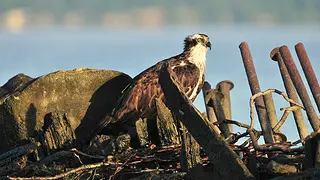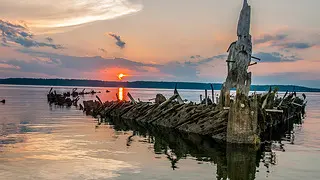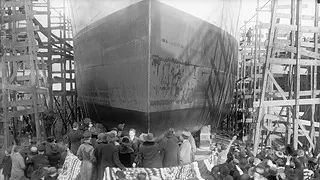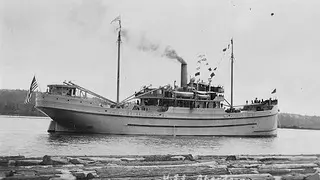Mistake-Turned-Ecological
Treasure
The Ghost Fleet of the Potomac is a unique natural habitat, primed for exploration by scientists, tourists, fishermen, and outdoor enthusiasts. The fleet is located just 40 miles south of Washington, D.C., and a boat ramp gives visitors easy access to the fleet and other destinations along the Potomac River.
Charles County, Maryland, manages a day-use area at Mallows Bay Park, and the bay is a site along the Captain John Smith Chesapeake National Historic Trail. It’s also a premier location for bass fishing and a bird watcher’s paradise. Unique habitats have evolved above and below the waters of the Ghost Fleet, and the fleet’s hulls have become a home for birds, reptiles, amphibians, invertebrates, and mammals. The Ghost Fleet is the perfect spot for heritage tourism, and it has potential for new archeological discoveries and opportunities for scientific research.
To protect this culturally and historically significant area, the state of Maryland, with the support of Charles County, Maryland, submitted a nomination in 2014 to the National Oceanic and Atmospheric Administration (NOAA) to consider Mallows Bay a National Marine Sanctuary. Aside from helping to protect these fragile historic resources, the designation will also create a management plan that includes educational and interpretive strategies designed to encourage sustainable tourism at the sanctuary.
A New Marine Sanctuary
In July 2019, local community partners, national conservation and preservation groups, and recreation and education advocates celebrated the designation of a new national marine sanctuary at Mallows Bay in the Potomac River. It was the first such designation in 19 years.
While the National Trust named the Ghost Fleet a National Treasure in 2017 to reflect its cultural and historical value, local community partners, national conservation and preservation groups, and recreation and education advocates all worked together to achieve this game-changing designation. Now as a marine sanctuary, it will enjoy further recognition and attention that connects the local community and new visitors to this unique place.












